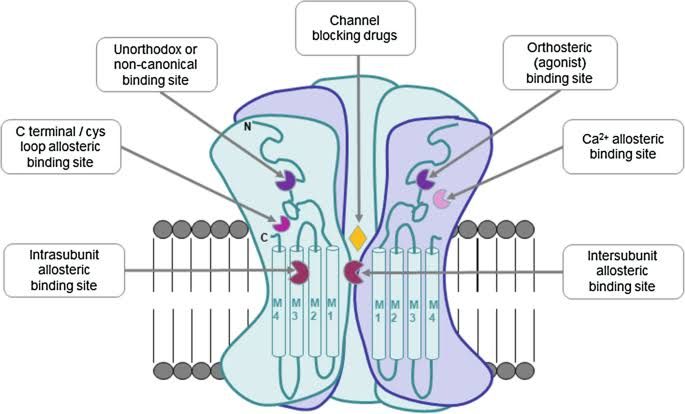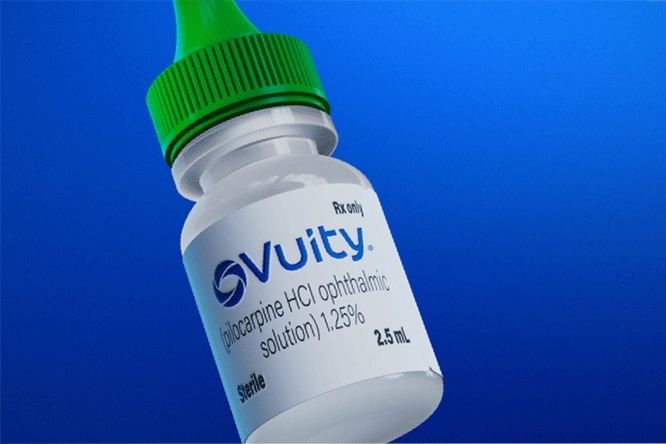
The nervous system communicates through a complex interplay of neurotransmitters and receptors. Among the most crucial of these is acetylcholine (ACh), which exerts its effects by binding to two primary types of receptors: muscarinic and nicotinic. Nicotinic acetylcholine receptors (nAChRs) are ligand-gated ion channels that play a fundamental role in signal transmission at the autonomic ganglia and the neuromuscular junction. Agents that interfere with this process, known as nicotinic blocking agents or antagonists, are of significant pharmacological and clinical importance.
Classification of Nicotinic Blocking Agents
Nicotinic blocking agents are primarily classified based on their principal site of action. The two major anatomical locations for nAChRs are the neurons of the autonomic ganglia and the motor endplates of skeletal muscle. This distinction gives rise to two main classes of drugs.
1. Ganglionic Blocking Agents
These agents act selectively on the nAChRs (specifically the Nₙ subtype) located in the ganglia of both the sympathetic and parasympathetic divisions of the autonomic nervous system. By blocking these receptors, they inhibit the transmission of nerve impulses from preganglionic to postganglionic neurons, effectively shutting down the entire autonomic outflow.
- Historical Examples: Hexamethonium, Mecamylamine, Trimethaphan.
- Current Status: These drugs are now almost entirely obsolete in clinical practice due to their widespread, non-selective, and unpredictable effects.
2. Neuromuscular Blocking Agents (NMBAs)
Also known as muscle relaxants, these agents act on the nAChRs (specifically the Nₘ subtype) at the neuromuscular junction (NMJ), the synapse between a motor neuron and a skeletal muscle fiber. Their action interrupts the transmission of signals from the nerve to the muscle, resulting in muscle paralysis. NMBAs are a cornerstone of modern anesthesia and critical care and are further subdivided based on their mechanism of action.
- A. Non-Depolarizing (Competitive) Blockers: These agents act as competitive antagonists to ACh at the NMJ. They are structurally related to the first known muscle relaxant, curare. They can be categorized by their chemical structure:
- Isoquinoline Derivatives: Tubocurarine (prototype, rarely used), Atracurium, Cisatracurium.
- Aminosteroid Derivatives: Pancuronium, Vecuronium, Rocuronium.
- B. Depolarizing Blockers: This class contains only one clinically used drug, which acts as an agonist at the nAChR, but produces paralysis through a unique mechanism.
- Example: Succinylcholine.
Mechanism of Action
Understanding the distinct mechanisms of these agents is crucial to appreciating their clinical profiles.
1. Mechanism of Ganglionic Blockers
Ganglionic blockers function as competitive antagonists at the Nₙ receptors within autonomic ganglia. They occupy the receptor site, physically preventing acetylcholine released from preganglionic neurons from binding and initiating a depolarizing postsynaptic potential. The clinical effect of this blockade on a specific organ system depends on which division of the autonomic nervous system (sympathetic or parasympathetic) exerts the dominant baseline tone on that organ.
- Arterioles and Veins: Predominantly under sympathetic tone. Blockade causes vasodilation, leading to a profound drop in blood pressure (hypotension).
- Heart: Predominantly under parasympathetic (vagal) tone. Blockade interrupts this tone, leading to tachycardia (increased heart rate).
- Other Organs: The effects are a mix of blocking both systems, leading to dry mouth, blurred vision (cycloplegia), urinary retention, and constipation.
2. Mechanism of Neuromuscular Blocking Agents (NMBAs)
A. Non-Depolarizing Blockers These agents are classic competitive antagonists. They bind to the Nₘ receptors on the motor endplate but do not activate them. By occupying a significant number of receptors, they prevent ACh from binding and initiating the end-plate potential required for muscle cell depolarization and contraction.
- Key Features:
- No Initial Excitation: They produce a flaccid paralysis without any initial muscle twitching.
- Reversibility: Their effects can be overcome by increasing the concentration of ACh in the synaptic cleft. This is achieved clinically by administering acetylcholinesterase inhibitors (e.g., neostigmine, edrophonium), which prevent the breakdown of ACh.
- Order of Paralysis: Paralysis typically begins in small, rapidly moving muscles (eyes, face, fingers), progresses to limbs and the trunk, and finally affects the intercostal muscles and the diaphragm, leading to respiratory arrest. Recovery occurs in the reverse order.
B. Depolarizing Blockers (Succinylcholine) The mechanism of succinylcholine is unique and occurs in two phases:
- Phase I Block (Depolarizing Phase): Succinylcholine is structurally similar to two linked acetylcholine molecules. It binds to and activates the Nₘ receptor, causing an initial depolarization of the motor endplate. This leads to transient, disorganized muscle contractions known as fasciculations. However, unlike ACh, which is rapidly hydrolyzed by acetylcholinesterase, succinylcholine is resistant to this enzyme and is only slowly broken down by plasma cholinesterase (pseudocholinesterase). Its persistence at the receptor keeps the muscle membrane continuously depolarized. This persistent depolarization causes the adjacent voltage-gated sodium channels to remain in an inactivated state, rendering the muscle fiber unresponsive to further stimuli and leading to a flaccid paralysis.
- Phase II Block (Desensitizing Phase): With prolonged or repeated administration of succinylcholine, the receptor itself may change its conformation and become desensitized to the agonist. The membrane gradually repolarizes, but the receptor remains unresponsive to ACh. This phase clinically resembles the block produced by non-depolarizing agents, though its mechanism is more complex.
Clinical Uses and Adverse Effects
(a) Ganglionic Blockers
- Clinical Uses: Largely historical. They were once used to manage severe hypertension and to produce controlled hypotension during surgery to reduce bleeding. Their lack of specificity made them difficult to manage.
- Adverse Effects: Their extensive side effects are a direct result of blocking the entire autonomic nervous system. These include:
- Orthostatic Hypotension: Severe dizziness upon standing.
- Xerostomia (Dry Mouth): Blockade of parasympathetic salivary glands.
- Anhidrosis (Inability to Sweat): Blockade of sympathetic innervation to sweat glands.
- Blurred Vision and Photophobia: Paralysis of the ciliary muscle and iris.
- Urinary Retention and Constipation: Blockade of parasympathetic control of the bladder and gut.
(b) Neuromuscular Blocking Agents (NMBAs)
NMBAs are indispensable tools in modern medicine, particularly in anesthesiology and critical care.
- Clinical Uses:
- Surgical Relaxation: To provide profound muscle relaxation required for intra-abdominal and intra-thoracic surgeries, allowing surgeons to operate without interference from muscle tone.
- Facilitation of Endotracheal Intubation: To relax the muscles of the jaw and larynx, making it easier and safer to insert a breathing tube. Succinylcholine, with its rapid onset and short duration, is ideal for rapid sequence intubation.
- Control of Mechanical Ventilation: In critically ill patients in the ICU, NMBAs prevent the patient from breathing against the ventilator (“bucking the vent”), which improves oxygenation and reduces lung injury.
- Control of Muscle Spasms: Used to manage convulsions associated with conditions like tetanus or status epilepticus, or to prevent muscle injury during electroconvulsive therapy (ECT).
- Adverse Effects:
- All NMBAs: The primary “adverse effect” is respiratory paralysis due to diaphragm relaxation, which is an expected outcome and necessitates mechanical ventilation.
- Non-Depolarizing Agents:
- Histamine Release: Some older agents (like tubocurarine) can cause histamine release from mast cells, leading to hypotension, bronchospasm, and flushing. Newer agents like cisatracurium and rocuronium have minimal histamine-releasing properties.
- Cardiovascular Effects: Pancuronium can cause tachycardia by blocking muscarinic receptors in the heart (vagolytic effect).
- Prolonged Blockade: Patients with renal (pancuronium) or hepatic (vecuronium) dysfunction may have difficulty clearing the drugs, leading to prolonged paralysis.
- Depolarizing Agents (Succinylcholine):
- Hyperkalemia: The initial depolarization causes a release of potassium from muscle cells. In patients with extensive burns, massive trauma, or upper motor neuron injury, this can lead to a life-threatening increase in serum potassium levels and cardiac arrest.
- Malignant Hyperthermia (MH): A rare, inherited pharmacogenetic disorder of skeletal muscle. In susceptible individuals, exposure to succinylcholine (and volatile anesthetics) triggers a hypermetabolic state characterized by muscle rigidity, extremely high body temperature, and metabolic acidosis, which can be fatal if not treated immediately with dantrolene.
- Increased Intraocular and Intragastric Pressure: The initial fasciculations can transiently increase pressure in the eye and stomach.
- Postoperative Muscle Pain (Myalgia): Common complaint due to the initial unsynchronized muscle contractions.
- Bradycardia: Succinylcholine can stimulate cardiac muscarinic receptors, particularly in children or with a second dose, causing a slowed heart rate.
- Prolonged Paralysis: Patients with a genetic deficiency in plasma cholinesterase cannot metabolize succinylcholine effectively, leading to a dangerously prolonged block lasting hours instead of minutes.
References
- Brunton, L. L., Dandan, R. H., & Knollmann, B. C. (Eds.). (2018). Goodman & Gilman’s: The Pharmacological Basis of Therapeutics (13th ed.). McGraw-Hill Education.
- Katzung, B. G., & Vanderah, T. W. (Eds.). (2021). Basic & Clinical Pharmacology (15th ed.). McGraw-Hill Education.
- Miller, R. D. (Ed.). (2020). Miller’s Anesthesia (9th ed.). Elsevier.
- Appiah-Ankam, J., & Hunter, J. M. (2004). Pharmacology of neuromuscular blocking drugs. Continuing Education in Anaesthesia, Critical Care & Pain, 4(1), 2–7. https://doi.org/10.1093/bjacep/mkh002







